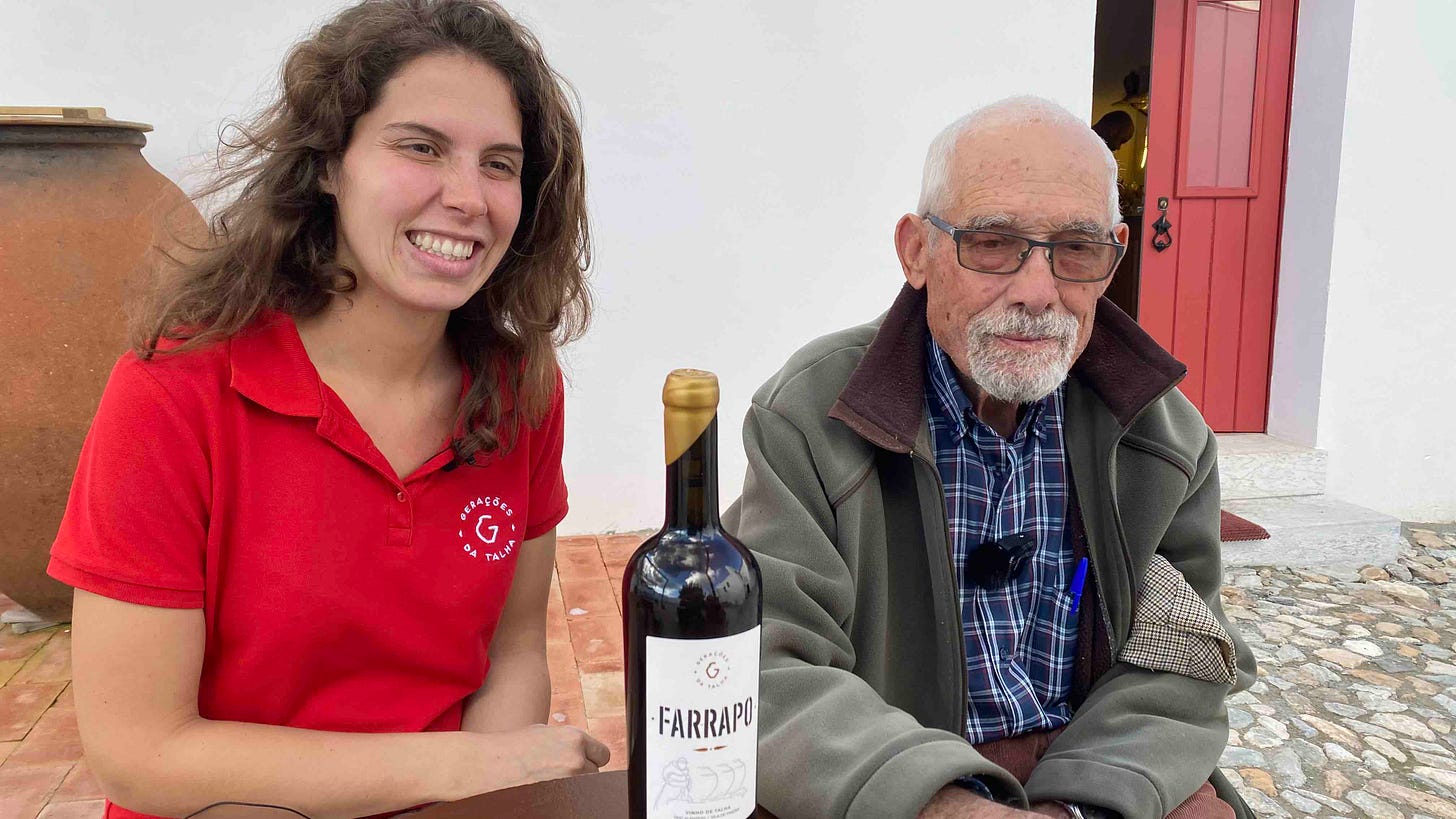One of the hottest trends in Portuguese winemaking is using amphorae clay pots - just like the Roman’s did two thousand years ago.
In Portugal they are known as talhas, and it’s the way people in Alentejo have been making wine for generations - fermenting field-blended grapes in ancient clay vessels to produce young wines.
In the town of Vila de Frades (Friars’ Town) they claim to have been making it this way - constantly - since Roman times

The clue’s in the title of course…the monks had a thirst for it and the nearby monastery was built on the site of a Roman villa and vineyard.
And Vinho de Talha has its own DOC geographical classification (Denominação de Origem Controlada), even though it can be made in various parts of Alentejo.
We’re taking a similar, broader approach this episode by basing our story around Vila de Frades in Vidigueira rather than just at one winery.
I’ve written quite a bit about talha winemaking over the last couple of years, so here are a few links to articles for you to read at your leisure.
The Return of Roman Winemaking
The Romans were making wine in clay amphora pots across their Empire two thousand years ago, and in one small town in rural Portugal they’ve been making it the same way ever since. Vila de Frades, or friars’ town, takes its name from the monks who spent centuries producing communion wine at the nearby São Cucufate monastery which was built on the ruins o…
It’s tough to find a talha that’s less than a hundred years old as the skills to make them and the kilns to fire them have been lost.
Vila de Frades is a small, typical Alentejo town with different coloured barras around the buildings – yellows and blues and reds.
There’s a little walkway in the centre of town, lined with orange trees which were in blossom when we visited.
There are talha cellars throughout town and on the corner of the main road is the Interpretative Centre which is a beautiful modern museum.
The other country famous for its amphora wine making is Georgia (the country, not the State!), but there they call them qvevri - and bury them.
Georgia on my mind
So where did it all begin? Who had the crazy idea of growing grapes and turning them into booze? It turns out it all started about eight thousand years ago in Georgia – not the American state but the eastern European country in the Southern Caucasus.
The museum has bottles that you look through for videos and to smell a wine, there’s a table with two overhead projectors.
We met the mayor of Vidigueira, Rui Raposo, who explained why he wants talha wines to be given heritage status by UNESCO...as happened with Cante Alentenjao singing, which you’ll also hear this episode.
Cante Alentejano
A brilliant evening recording audio (and a bit of video) in Vila de Frades for the annual St Martin’s Day opening of the talha amphora pots. Click here to read the whole story.
We visit Gerações de Talha – a small winery set up by Teresa Caeiro who gave up a career in diamond mining to return to her roots for love and to make wine with her grandfather Prof Arlindo Ruivo.

They have a few different wines including Natalia and Farrapo and she explains the whole process - including the story of “the mother and the son”.
We tour ROCIM with winemaker Pedro Ribeiro who champions amphorae and whose latest wine sells for €1000 a bottle.
WINEMAKER: Pedro Ribeiro, Herdade do Rocim
Criss-crossing the Alentejo with a thirst for wine knowledge we often find ourselves driving through the small, picture-perfect Portuguese town of Cuba. I always presumed it was named after the Caribbean island, but the townsfolk claim it was the other way around...and then they explain why.
We had dinner and did a blind wine tasting at O País das Uvas which has a "Cella Vinaria Antiqua (Historical Wine Cellar)."
Ruben Honrado is managing partner of Honrado Vineyards and he gave us a wine tasting with a difference – a blind tasting where we drank from black glasses and were challenged to tell red wine from white, and talha wine from more regular blends.
We hope you enjoy the episode - it’s one of our favourite stories so far.
A&A
















Share this post